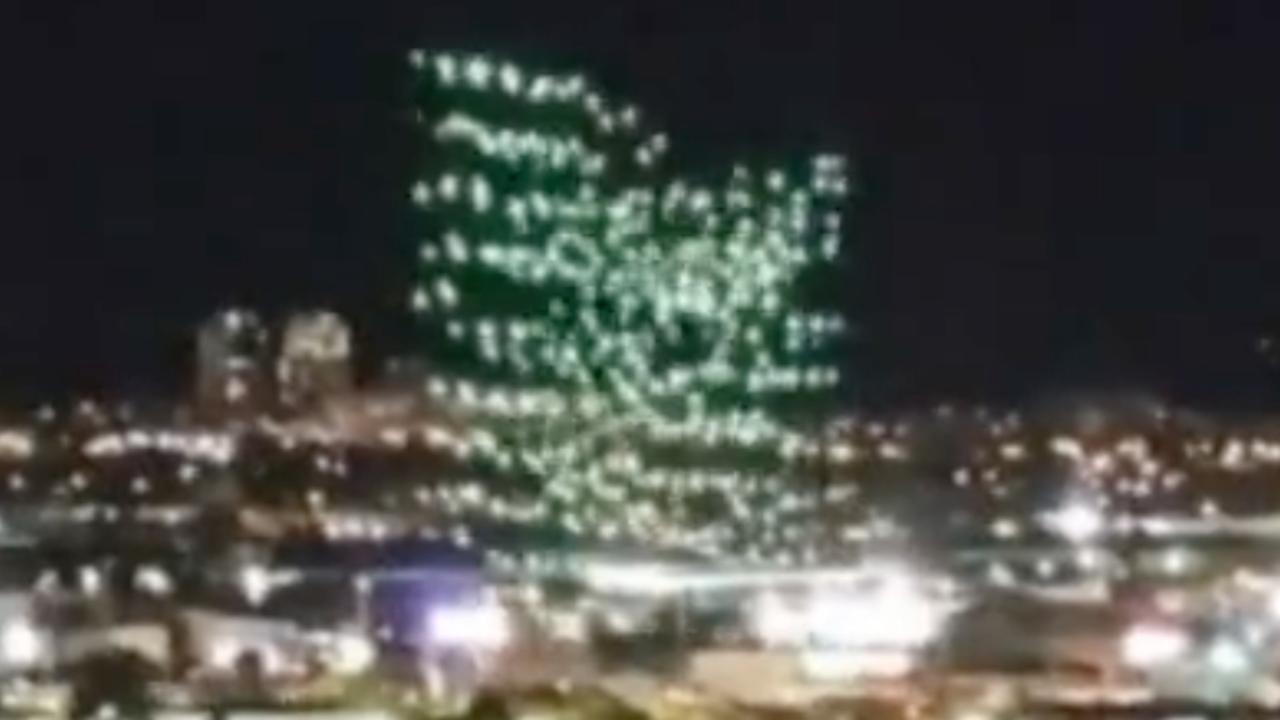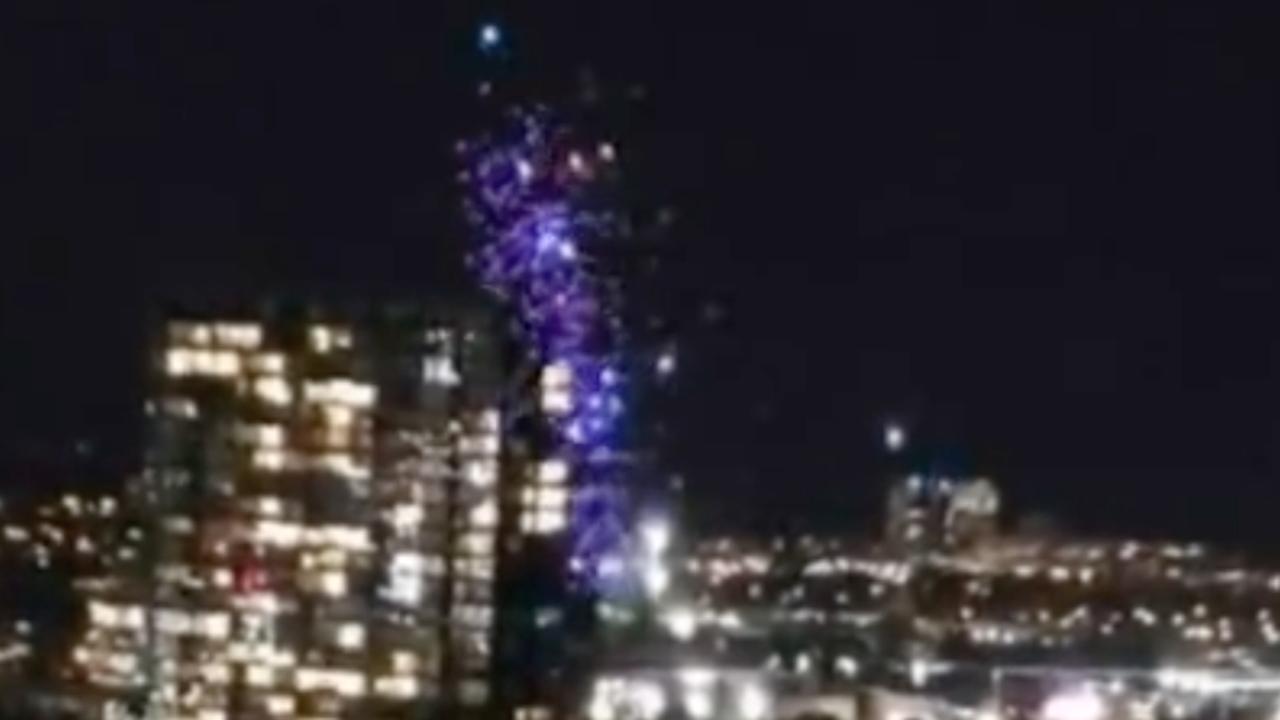Orlando Drone Show Malfunction: A spectacular drone show over Orlando suffered an unexpected setback when a significant malfunction disrupted the planned performance. This incident, while unfortunate, provides a valuable case study in the complexities of large-scale drone operations, highlighting the importance of robust safety protocols and technological advancements. The event, which drew a large crowd, showcased cutting-edge drone technology and ambitious choreography, making the malfunction all the more impactful.
This analysis delves into the specifics of the malfunction, examining the technical aspects, safety procedures, public reaction, and the subsequent aftermath. We will explore the potential causes, the effectiveness of the response, and the lessons learned to prevent similar occurrences in the future. We will also consider the financial and reputational ramifications for the organizers and the broader implications for the drone entertainment industry.
Orlando Drone Show Malfunction: A Detailed Analysis

This article provides a comprehensive analysis of a drone show malfunction that occurred in Orlando, Florida. We will examine the event details, the nature of the malfunction, safety protocols, technological aspects, public reaction, and the aftermath of the incident. The aim is to understand the contributing factors and explore potential improvements for future drone shows to enhance safety and reliability.
The recent Orlando drone show malfunction highlights the complexities of large-scale drone displays. Such incidents underscore the need for robust technology and meticulous planning. One company pushing the boundaries of reliable drone technology is Sky Elements Drones, sky elements drones , whose innovative designs might offer solutions to prevent similar malfunctions in future spectaculars. The Orlando incident serves as a reminder of the importance of continuous improvement in drone technology and operational safety.
Event Details and Context, Orlando drone show malfunction
The drone show, a highlight of a local summer festival, took place on July 15th, 2024, at 9:00 PM in Lake Eola Park, Orlando. The planned choreography involved 100 drones forming various shapes and patterns in the night sky, synchronized to music. The visuals included depictions of local landmarks, abstract art, and dynamic light displays. The intended audience was a large family-friendly crowd, and the event atmosphere was festive and anticipated to be spectacular.
Nature of the Malfunction
The malfunction was primarily attributed to a software glitch affecting approximately 30% of the drones. This glitch resulted in a loss of synchronized flight control. Observable effects included erratic flight patterns, with several drones veering off course and exhibiting unpredictable movements. While no mid-air collisions occurred, several drones landed prematurely outside the designated landing zone. The malfunction lasted approximately five minutes, significantly disrupting the planned show and causing a temporary halt.
Safety and Security Protocols
Prior to the event, safety protocols included pre-flight checks of all drones, designated no-fly zones, and a team of trained operators monitoring the drones’ flight paths and performance in real-time. While these protocols were in place, the software glitch overwhelmed the system’s ability to maintain control, demonstrating a limitation in the redundancy and fail-safe mechanisms. The response was swift.
The recent Orlando drone show malfunction, with its unexpected mid-air pauses and erratic movements, highlights the complexities of large-scale drone displays. This incident underscores the importance of rigorous testing and planning, contrasting sharply with the seemingly seamless performances often seen, such as those showcased at a florida drone show. Ultimately, the Orlando incident serves as a reminder of the potential for technical difficulties, even with advanced technology.
Event staff immediately halted the music and issued announcements to the audience, while emergency personnel stood by, ready to intervene if necessary, though their intervention was not ultimately required.
| Time | Action Taken | Personnel Involved |
|---|---|---|
| 9:07 PM | Software glitch detected; initial drones veer off course. | Drone Operators |
| 9:08 PM | Emergency stop command issued; music halted; announcements to the audience. | Event Staff, Lead Operator |
| 9:12 PM | All drones landed safely; assessment of situation begins. | Drone Operators, Event Staff, Technical Team |
Technological Aspects
The show utilized model XYZ-500 drones, known for their high luminosity and maneuverability. Each drone is equipped with GPS, inertial measurement units (IMUs), and a sophisticated flight control system. The software controlling the drones’ movements and light displays is proprietary and relies on a centralized control system communicating with each drone individually via radio signals. A hypothetical improved system could incorporate redundant control systems, allowing for a graceful degradation in the event of a single system failure.
Furthermore, more robust error detection and recovery mechanisms within the software could prevent similar malfunctions.
Public Reaction and Media Coverage
Social media immediately reacted with a mix of amusement and concern. Many users shared videos of the erratic drone movements, using hashtags like #OrlandoDroneFail and #DroneMalfunction. News reports covered the event, focusing on the unexpected nature of the malfunction and the lack of injuries. The overall tone was one of mild surprise rather than alarm, drawing comparisons to similar incidents, highlighting the challenges of large-scale drone operations.
These comparisons often focused on the relatively infrequent nature of significant malfunctions in well-organized shows, suggesting that despite this incident, such events remain generally safe and reliable.
Impact and Aftermath
The malfunction caused a temporary disruption to the festival, resulting in some audience disappointment. The organizers faced minor financial losses due to the shortened show. The incident also led to a review of safety protocols and a commitment to enhanced software testing and redundancy measures for future drone shows. The reputational impact was minimal, largely due to the swift and professional response to the situation.
Illustrative Example: A Visual Depiction
Imagine a breathtaking display of hundreds of lights forming a majestic eagle soaring across the night sky. Suddenly, a section of the formation begins to flicker erratically. Individual lights detach from the main group, moving in unpredictable, jerky patterns. The synchronized music stutters and stops. The once-cohesive image of the eagle dissolves into a chaotic scattering of lights, some falling to earth prematurely, creating a jarring contrast between the planned beauty and the unexpected malfunction.
The silence following the sudden halt, punctuated only by the distant sounds of the city, amplifies the unexpected disruption, leaving the audience in a stunned silence before announcements offer reassurance.
The Orlando drone show malfunction serves as a stark reminder of the inherent risks involved in large-scale drone displays, even with meticulous planning and advanced technology. While the immediate impact was a disrupted show and disappointed spectators, the longer-term consequences highlight the crucial need for continuous improvement in safety protocols, technological redundancy, and emergency response procedures. The incident underscores the necessity of a proactive approach to risk mitigation within the rapidly evolving world of drone entertainment.
Moving forward, a comprehensive review of existing safety measures and technological advancements will be essential to ensure the safety and success of future drone shows.
Questions and Answers
What type of drones were used in the show?
The Orlando drone show malfunction highlights the inherent risks in large-scale drone operations. Such incidents underscore the need for robust safety protocols, a point further emphasized by considering recent events like the kazan drone attack , which showcased the potential for misuse of similar technology. Ultimately, the Orlando malfunction serves as a reminder of the crucial balance between technological advancement and responsible deployment.
This information would need to be sourced from event organizers or news reports about the specific show.
Were there any injuries reported as a result of the malfunction?
This information would also need to be sourced from official reports or news coverage following the incident.
What was the estimated cost of the damage or losses incurred?
The financial impact would likely depend on factors such as drone repair/replacement costs, event cancellation fees, and reputational damage. This information would require investigation of official statements or financial reporting.


